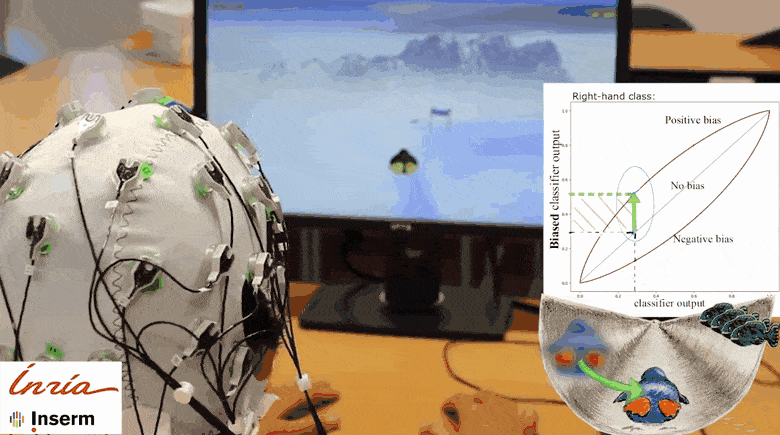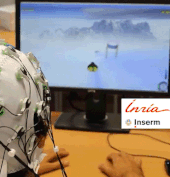
Learning to control a motor imagery brain-computer interface (MI-BCI) is a challenging task for the user, especially when one’s wandering thoughts can impede system performance. Various techniques were developed to assist the user to focus on the task and remain motivated. Such is the biased feedback, i.e., unrealistic representation of performance. Some studies demonstrated that participant’s false belief about having control over the system led to factual higher control (performance). However, this positive effect was not systematic and appeared to be rather subject-dependent. Our study reveals how different types of (visual) feedback bias interact with user’s traits and states and result in a significant change in MI-BCI performance and learning. The aim is to prescribe the best pairs between said psychological factors and biased feedback as guidelines for designing optimal bias for each user.
We conducted an experiment with thirty participants divided into three groups of ten who received feedback with either positive, negative or without any bias for 2 sessions. We introduced a continuous, non-linear bias function (based on Flow theory from positive psychology) which ensured participants’ feeling of control while being unaware of the bias. Our statistical results show anxiety to be detrimental to performance no matter the bias, while low workload (state) and high self-control (trait) produced higher performances with negative bias than without any bias (from 69% to 86%, and from 65% to 85%, respectively). Generally, negative bias increased learning only short-term, as learning significantly dropped in the second session. This unveils the potential of an adaptive bias across sessions. We created data-based predictive models that validate statistical findings and enable us to weigh the impact of the biases depending on states and traits. This work paves the path for personalized and adaptive MI-BCI user training.

